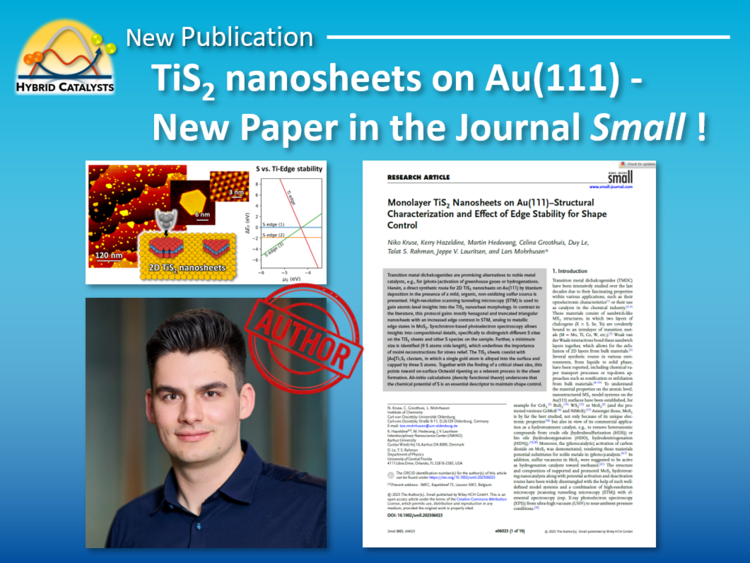We’re delighted to announce the publication of a new article in Small: “Monolayer TiS2 Nanosheets on Au(111)–Structural Characterization and Effect of Edge Stability for Shape Control” based on the work lead by Niko Kruse.
This study presents a novel UHV-based method to synthesize pristine monolayer TiS₂ nanosheets directly on Au(111) by co-deposition of titanium in the presence of a mild organic sulfur source.
Our work adds TiS₂, a less commonly studied transition-metal dichalcogenide, to the family of well-defined 2D nanomaterials, shining new light on its atomic-level properties and formation mechanisms. The paper demonstrates how experimental parameters can be used to regulate the shape distribution of 2D nanomaterials via the edge stability, with potential relevance in catalysis and photocatalysis.
A huge thank you to our co-authors Kerry Hazeldine, Martin Hedevang, Jeppe V. Lauritsen and Celina Groothuis for their invaluable support in the experimental work, as well as Duy Le and Talat Rahman for the essential theoretical investigations. This was a great collaboration!
You can find the article here.
Abstract
Transition metal dichalcogenides are promising alternatives to noble metal catalysts, e.g., for (photo-)activation of greenhouse gases or hydrogenations. Herein, a direct synthetic route for 2D TiS2 nanosheets on Au(111) by titanium deposition in the presence of a mild, organic, non-oxidizing sulfur source is presented. High-resolution scanning tunneling microscopy (STM) is used to gain atomic-level insights into the TiS2 nanosheet morphology. In contrast to the literature, this protocol gains mostly hexagonal and truncated triangular nanosheets with an increased edge contrast in STM, analog to metallic edge states in MoS2. Synchrotron-based photoelectron spectroscopy allows insights into compositional details, specifically to distinguish different S sites on the TiS2 sheets and other S species on the sample. Further, a minimum size is identified (9 S atoms side length), which underlines the importance of moiré reconstructions for stress relief. The TiS2 sheets coexist with [Au]Ti1S3 clusters, in which a single gold atom is alloyed into the surface and capped by three S atoms. Together with the finding of a critical sheet size, this points toward on-surface Ostwald ripening as a relevant process in the sheet formation. Ab-initio calculations (density functional theory) underscore that the chemical potential of S is an essential descriptor to maintain shape control.

